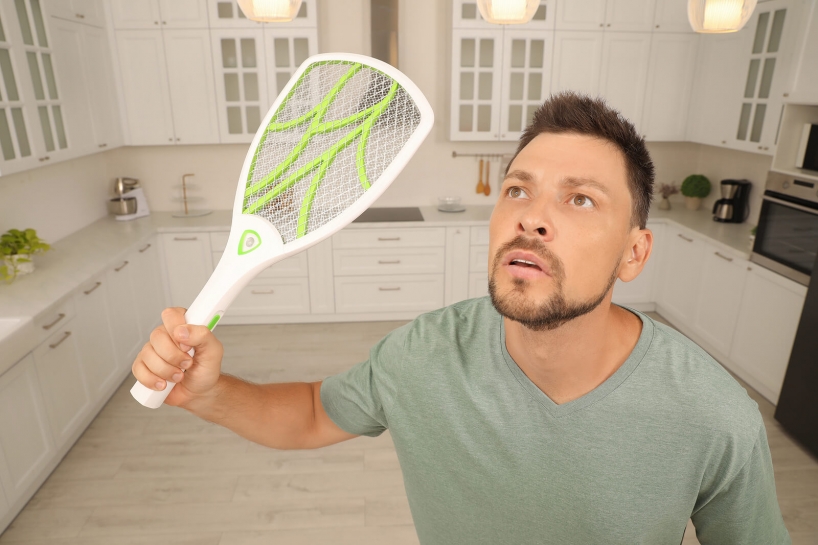
May 19th, 2022 by
The trade-off of lovely summer weather is, by default, an increase in flies. Warmer temperatures, their breeding cycle, and greater availability of fruit and rotting food mean that their numbers increase significantly – especially in our homes where they seek cooler conditions and food. Flies are not just annoying, they spread disease, so it’s always a good idea to have some strategies for dealing with them. Here is an overview of the main fly killing solutions at your disposal to help you choose the most appropriate methods for you.
Fly Door Screens
Probably one of the most ‘low tech’ fly control solutions, and one that has been around for many years, fly screens are a preventative measure that minimises the number of flies that enter your home. They allow you to keep the door open in warm weather so that you can allow fresh air in but there is a physical barrier to flying insects.
Flyscreens are easy to install, have no ongoing costs, and use no chemicals. However, they won’t stop every single fly so are best used in domestic environments where there are no large quantities of flies.
Flypaper
Flypaper is another basic method of fly control. It simply consists of sheets of sticky paper that flies adhere to when they make contact. It doesn’t have anything impregnated in the paper itself to bait the flies so it usually needs to be placed near the areas that flies are attracted to or something to draw them, such as fruit or something sweet that will give off an odour. There are no pesticides involved so it’s safe around people and children.
Fly Sprays
A fly spray is quite a common solution. You can spray directly at any flies in the room, or you can spray the surfaces they are likely to land on, where they will pick up the pesticide on their legs and hairs, which will kill them. The pesticides used are usually harmless to people and pets in these quantities, but they don’t always smell pleasant. Sprays can be a valuable treatment for flies in large quantities, such as a cluster fly infestation, and they usually have an immediate knockdown effect.
Electric Fly Killers
Electric fly killers are commonly used in commercial premises, in particular food service and preparation businesses, but are now becoming more common in domestic settings. They work by luring flies in with UV light and then zapping them with an electric shock, killing them instantly. They are a really effective solution due to how attractive they are to flies and how effective they are at killing them. The dead flies are trapped in a tray inside the unit so they’re hygienic to use and easy to empty. Alternatively, some electric fly killers use glue boards instead of an electrified grill – the glue boards work the same as flypaper but with the added advantage of UV light to attract flies to the board.
One thing to look out for is the type of bulbs used to emit UV light. LED UV bulbs are a recent development in electric fly killers as, until recently, they weren’t powerful enough to attract flies. However, that’s now not the case as modern UV bulbs are just as effective in that respect as traditional bulbs. They also have the advantage that the UV light does not degrade over time, which does happen with standard bulbs and requires them to be changed every year or so, otherwise they stop working. LED bulbs never need to be replaced. They are also lighter and cooler, so give you more options for placement of the units. Standard bulb electric fly killers do tend to be cheaper to buy initially.
Comments
Leave a reply
Your e-mail address will not be published. All fields are required


